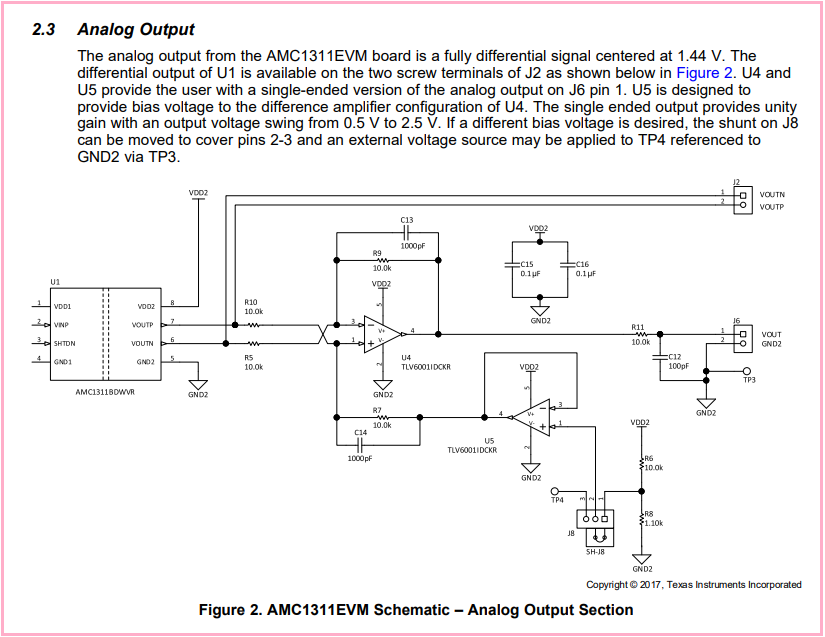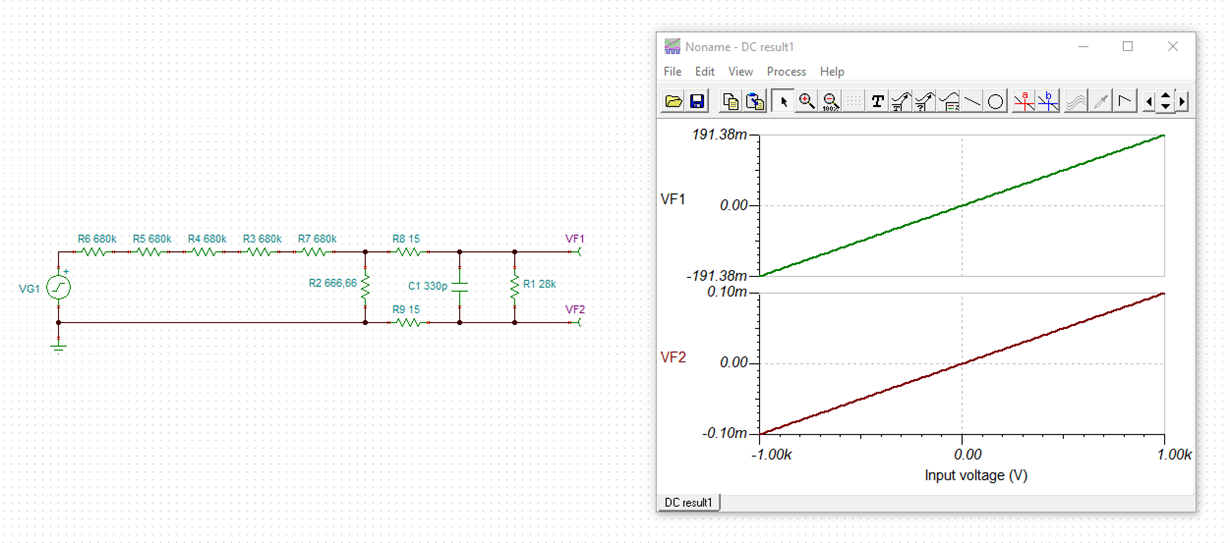Other Parts Discussed in Thread: , TIDA-00835, AMC1301, AMC1300, ISO224
Hi
I am using AMC1200 for measurement of DC voltages upto ±1000V. The final output goes to the differential ADC channel.
Please refer to the attached schematic.
I need to attenuate the output of AMC1200 since the allowed ADC input range is ±500mV.
During normal operation, the output is uniform without any noise or fluctuations.
But, during RS test (Radiated Susceptibilty) the output of AMC1200 gets disturbed. The final output of the circuit fluctuates by around 1-2mV which translates to 5-10VDC in terms of measured Input Voltage.
I have monitored the input and output signals of AMC1200 and found that the input signal does not vary. Only the output signal fluctuates.
I have also monitored the input and output VDD signals and there is no variation there also.
What could be the cause of this kind of fluctuations and how to eliminate it?
Thanks,
Avik Bhowmik



